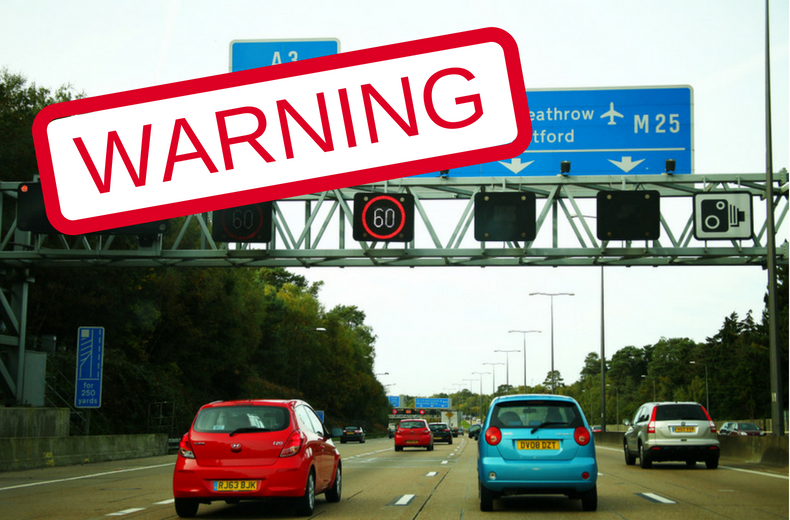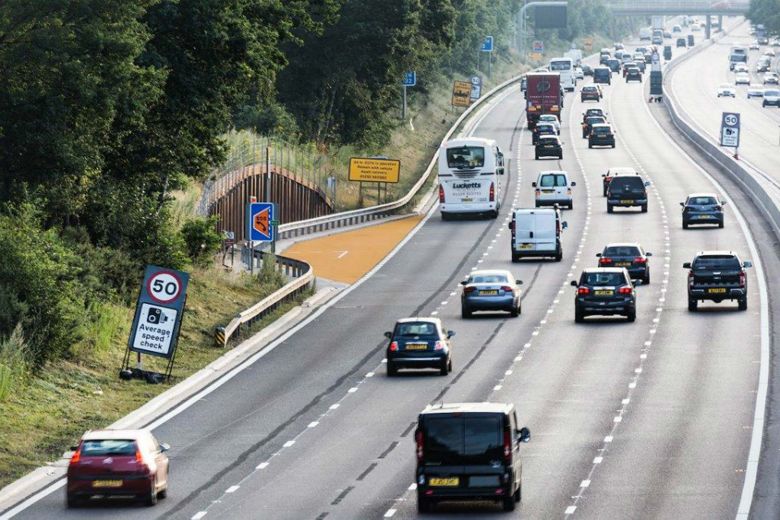It is imperative people get to grips with these emergency refuge areas. or ‘SOS’ lay-bys as they are now being signed, in order to stay safe on motorways.
Read on to discover how an emergency refuge area works and why they have been introduced.
What is an Emergency Refuge Area?
Emergency refuge areas are located on smart motorways and designed to offer a ‘safe haven’ for stranded vehicles on busy vehicles.
The problem is they are positioned up to every 1.5 miles apart, with an emergency telephone available to request assistance.
This makes it difficult for drivers to reach one if they have just passed one while experiencing car troubles.
Introduced by the Government to aid traffic, smart motorways deploy traffic management methods to increase capacity and reduce congestion in busy areas and at peak times.
These methods include using the hard shoulder as a ‘live’ lane and enforcing variable speed limits to control the flow of traffic.
The latest smart motorway to open is a 13.4-mile stretch of the M3 between Farnborough and the M25, with four lanes in both directions and a number of emergency refuge areas.
Each area has been redesigned using a highly visible orange road surface and clearer signs to improve visibility.
How should you use an ERA?
.jpg)
If you’ve broken down or have been involved in an accident while on a smart motorway, you should attempt to use an emergency refuge area.
These are marked with large blue signs featuring an orange SOS telephone symbol.
Arrows will direct you into an indicated area marked on the tarmac and painted orange, where you should stop and switch on your hazard warning lights.
Occupants should then exit the vehicle from the passenger side and stand behind the crash barrier.
The SOS telephone should be used to speak to a representative at Highways England who will provide further instructions.
You should only use an emergency refuge area in the event of a breakdown or an accident. They are not be used for a rest stop, to make a phone call or to use the toilet.
MORE ADVICE: Are you a middle lane hogger? Here are the facts
What to do if you're unable to access an ERA?
If you are unable to reach the nearest ERA or exit your vehicle safely follow these steps:
- If you cannot get to an emergency refuge area, you should try to move on to the verge if there is no safety barrier and it is safe to do so.
- In all cases, switch on your hazard warning lights.
- If you stop in the nearside lane, exit your vehicle via the nearside (left hand) door if it is safe to do so and wait behind the safety barrier, if there is one.
- If it is not possible to get to the nearside lane or exit your vehicle safely, then you should stay in your vehicle with your seat belt on and dial '999' if you have access to a mobile phone.
- When the relevant highways authority becomes aware of a breakdown or an incident on a smart motorway they should switch on a ‘red cross' sign on the gantries above the lane you're in to stop traffic from entering it.

Where can you find ERAs?
Emergency refuge areas are located on smart motorways where the hard shoulder has been turned into an extra running lane.
The distance between each refuge areas varies, but the furthest you will be away from one is around 1.5 miles.
Why have ERAs been introduced?
Traditional motorways feature a hard shoulder for drivers to use for stopping in the event of a breakdown, an emergency situation or having been told to stop by the police.
ERA's are part of the Government's smart motorway plans, which use the hard shoulder as an extra running lane, either on a permanent basis or to ease congestion.
The emergency refuge areas have been introduced to replace the hard shoulder, albeit at specific intervals along the motorway. They are designed for emergency use only.
What the RAC says
RAC spokesman Pete Williams said: “We broadly welcome the roll-out of smart motorways as they have proved an effective means to increase capacity on some of our busiest stretches of motorway and in improving traffic flow.
"However, we continue to have reservations about ERAs or ‘SOS’ lay-bys as they are now being signed.
“The RAC has carried out research amongst drivers who have experience of driving on smart motorways and surprisingly awareness about the existence of ERAs and how to use them was low.
"One in four was unaware that ERAs existed at all and there was widespread uncertainty about how they should be used and what they should not be used for.
“Drivers were also unfamiliar with the traffic management measures imposed by Highways England when a breakdown occurs.
"One in five of those that broke down were unaware that they should contact Highways England when they stop in an ERA to alert them that they are there and that they should call again when they are ready to leave so the operator can close the nearside running lane with a red X to make it safe for them pull back out on to the motorway.
“Highways England are working hard now to improve driver awareness and understanding of smart motorways and the emergency rescue areas but the RAC is continuing to press for the distance between these to be reduced to less than 1km to improve safety and give motorists greater confidence.”
IN OTHER NEWS: Learner drivers to have motorway lessons?




